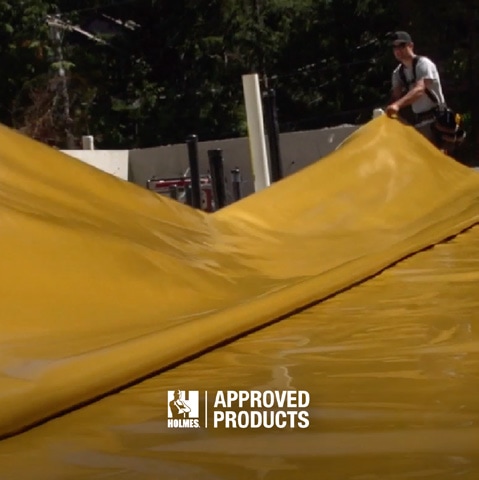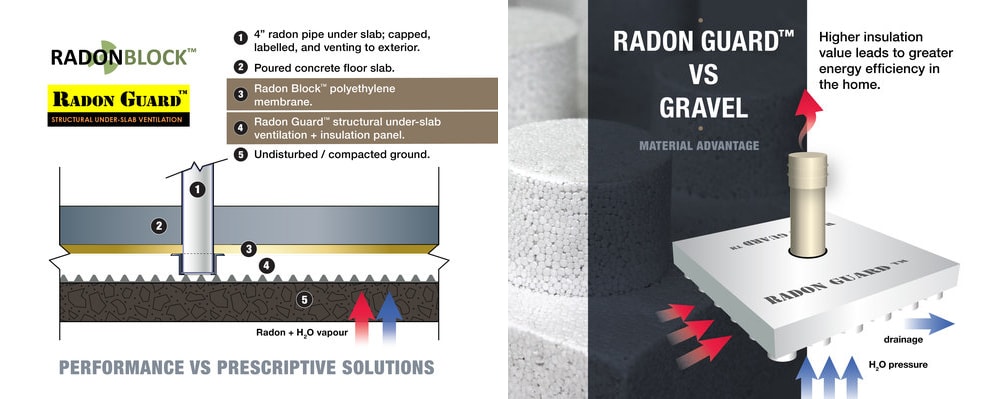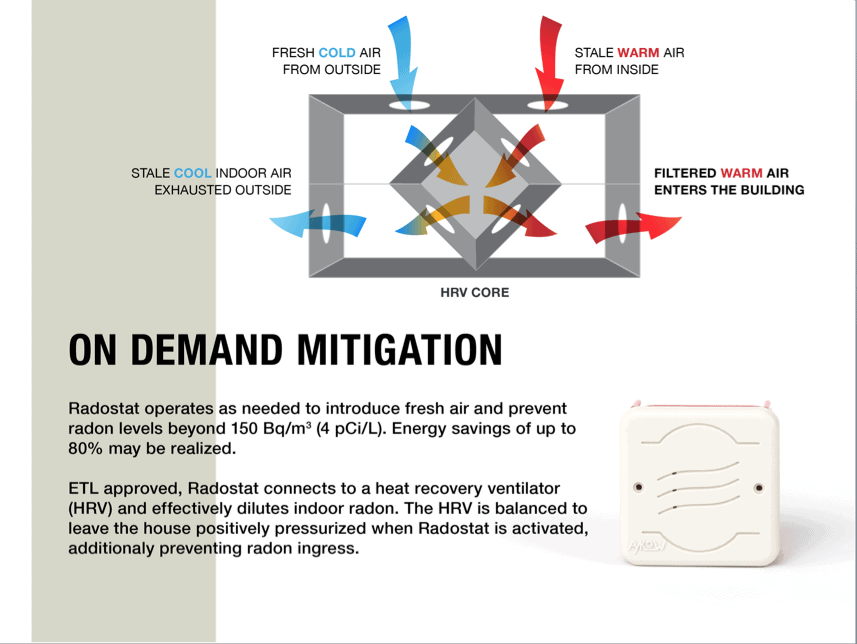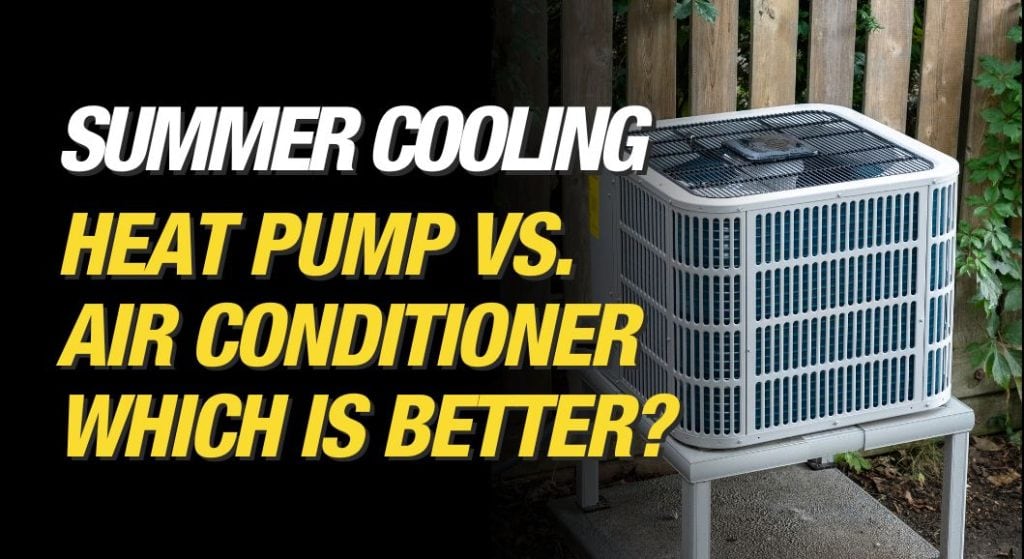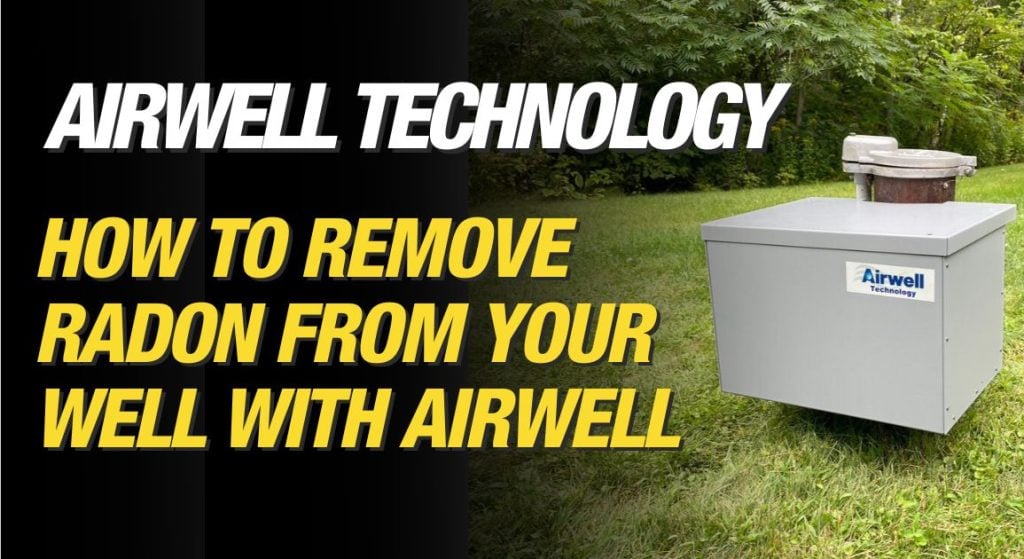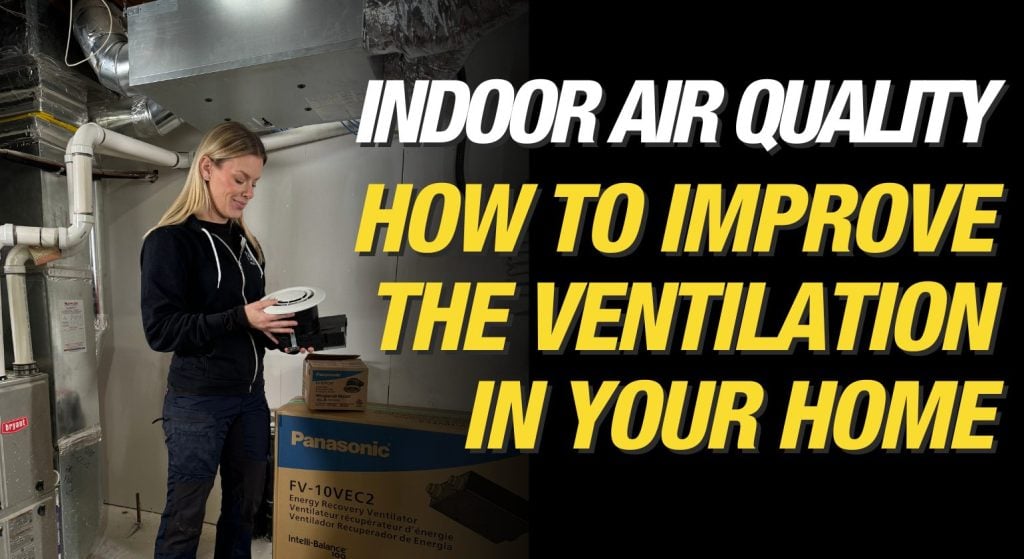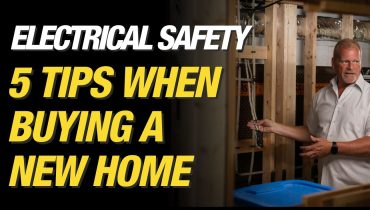Heat Pump vs Conventional AC (Air Conditioner): Which is Better for Cooling? Summer is here and it’s bringing the heat. But I can’t complain because I love the summer weather,...
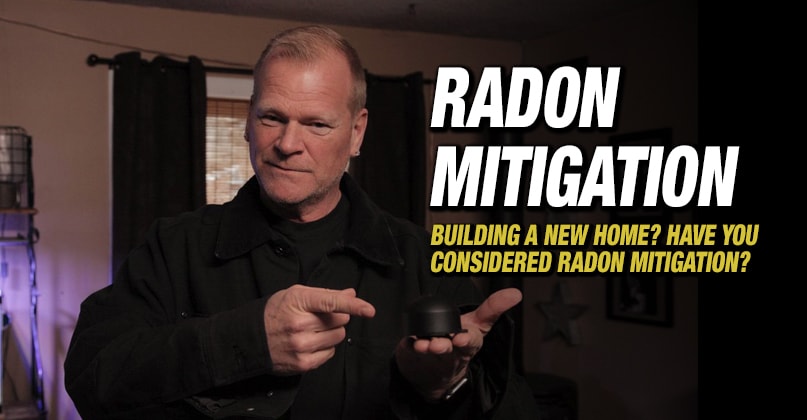
Have You Considered Radon Reduction System In a New Home?
By Mike Holmes
Mike’s Advice / Home Safety & Maintenance
Sunday, October 30th, 2022 @ 11:38am
I’ve been talking about the dangers of radon gas for years now, and we test every home we work on for radon and take the necessary steps to mitigate it. But what about new builds and new construction? Do they have radon? The short answer is yes. It’s important that you talk to your builder about radon mitigation systems.
Radon Reduction System in Home Building
Every home has some level of radon. Besides, radon levels will fluctuate at various times throughout the year, and concentration levels vary geographically. I’m glad to see many builders taking steps to include rough-ins for radon mitigation systems.
Where Is Radon?
Radon is present in every indoor environment, so it’s vital that homeowners must have their homes tested. Because long-term exposure to radon gas is harmful and can even lead to lung cancer.
Check out the Radon Potential Map of Canada but remember, that any home can have dangerous radon levels, regardless of geography.
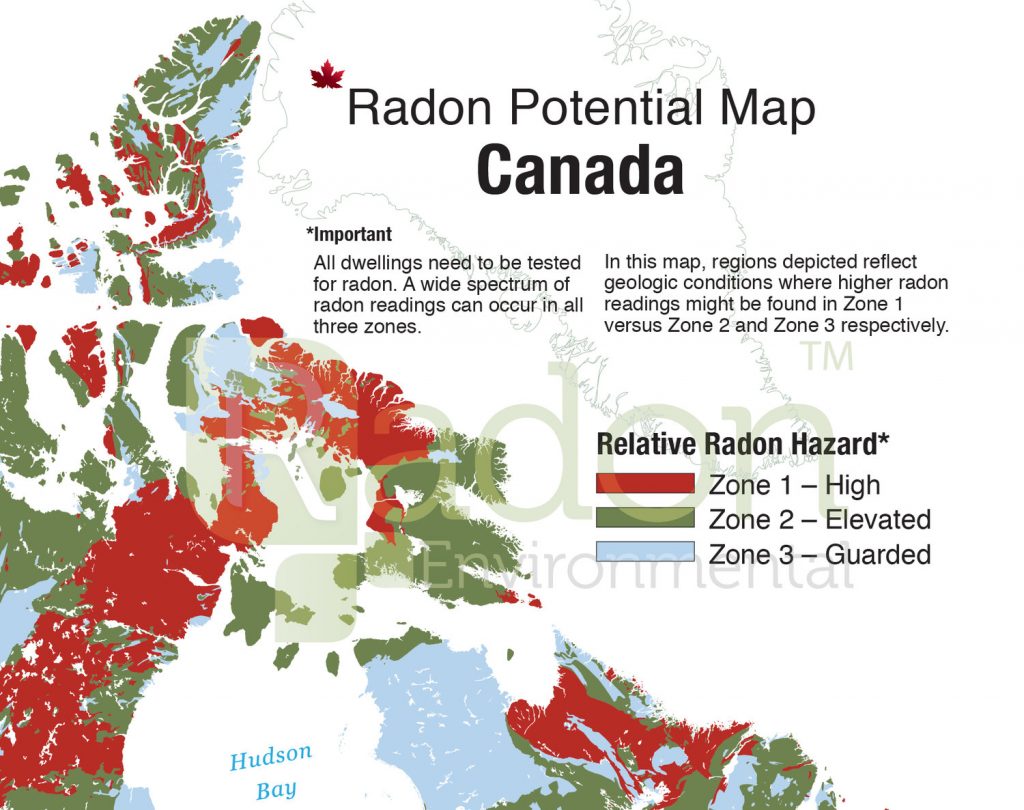
Credit: Courtesy of Radon Environmental Corp.
How Does Radon Get into Your Home?
Radon can seep into a home through soil, windows, cracks in foundation walls and floors, loose pipes fittings and support posts, floor drains and sump pumps, wall, floor joists, and even through your water facets! Remember, concrete is porous, and radon is a gas. Therefore, that means it can penetrate through even the tiniest holes in a house.
RELATED
- Soil
- Windows
- Cracks in walls & floors
- Loose pipe fittings & support posts
- Floor drains & sump pumps
- Wall & floor joints
- Groundwater
DID YOU KNOW?
Radon is measured in becquerels, which is a unit used to measure radioactive concentration. The Canadian guideline for radon dictates that a home should not contain more than 200 Bq/m3 or 200 units of becquerels per cubic metre. Before 2007, the national guideline for radon was 800 Bq/m3.
RELATED
Find out more about Radon Testing Options.
Three Levels of Radon Mitigation
I’ve been working with builders throughout Canada who are incorporating radon mitigation techniques right into their builds.
There are three levels of radon reduction systems that builders can install into new construction.
Level 1 is a Rough-In for Active Soil Depressurization for Radon Reduction
Level 1 is a rough-in for a radon-reduction system. A pipe extends into a soil gas collector (often gravel) under the foundation floor, which acts as an entry point for radon and other soil gases to a radon-reduction system. The pipe then terminates just above the slab and is capped.
This system is only a rough-in and can have a radon mitigation fan system added if required. In addition, this level also includes a membrane installed underneath the concrete slab, which is sealed to the foundation wall to minimize radon ingress. According to CARST most provinces and territories have adopted this method.
It is also crucial that areas around the sump pit, floor drains, and other pipes are sealed as well as caulking any cracks and joints in the foundation.
Level 2- Full Passive Vertical Radon Stack
Level 2 is an extension of Level 1, where the pipe from Level 1 is extended up through space vertically and out through a wall to terminate outdoors. Provisions must be taken to ensure the pipe is properly sealed to ensure re-entrainment of radon does not occur. The system relies on naturally occurring pressure differentials generated by the stack effect to mitigate radon. This level is now being used in the BC building code.
Level 3- Full Active Soil Depressurization
System Level 3 uses the pipe from Level 2 and also includes a low wattage radon fan. The system relies on the radon fan to induce a pressure difference to exhaust soil gases and radon from under the slab. Radon fans run continuously, and a system pressure monitor is installed for the monitoring of the system. This method has been shown to be highly effective at reducing radon concentrations in a building.
Many different products are available that can be used in the installation process of a radon reduction system. And I continually look for smart, high quality innovative products that help us build better, healthier homes so I highly recommend you consider Radon Guard and Radon Block by Radon Environmental.
Radon Guard and Radon Block for Radon Mitigation System
Radon Guard is a structural sub-slab insulation panel that creates continuous ventilation below the slab, with a 68% void space and insulation value that provides excellent communication under the entire slab area.
The Radon Guard is a structural sub-slab insulation panel that creates continuous ventilation below the slab.
Radon Block is an engineered vapor barrier that blocks radon from diffusing into the home and has the lowest radon diffusion coefficient or diffusivity of any of the membranes on the marketplace. By using both these products together, an active soil depressurization system would be achieved, coupled with a 4” vent pipe from below the slab that exhausts outdoors.
By using these products and methods, builders are providing an excellent radon-reduction solution for new construction. This method goes above building code standards, which will benefit homeowners by radon proofing the home.
Radon Block is an engineered vapour barrier that blocks radon from diffusing into the home and has the lowest radon diffusion coefficient or diffusivity of any of the membranes on the marketplace.
How Radon Block and Radon Guard work in an Active Soil Depressurization method. Credit: Courtesy of Radon Environmental Corp.
Contact Radon Environmental for Radon Reduction in New Builds
To learn more about these products, read Building it Right with Radon Guard and Radon Block
HRV – Heat Recovery Ventilator and Radon Reduction
Even if your new home only has a radon reduction rough-in you can still reduce the radon levels by working with your HRV. All new builds in Ontario require HRV installations.
An HRV allows for the exchange of outdoor and indoor air and can save energy and reduce heating/cooling costs. An HRV can also help minimize radon concentration by approximately 50%, according to CAREX Canada.
Installing a radon monitor, like the RADOSTAT, with your HRV can provide a very effective radon reduction solution. The Radostat constantly measures the radon peaks (not averages) and kicks the HRV into high-speed override when high levels are detected.
Credit: Courtesy of Radon Environmental Corp.
The Radostat is so effective it took home from 3300 Bq/m3 to 78 with an HRV. Once the radon concentration lowers, the HRV goes back to its regular function. I think every home should install the RADOSTAT to keep you and your family safe.
The graph above shows how The Radostat in conjunction with an HRV is very effective in reducing radon levels.
Credit: Courtesy of Radon Environmental Corp.
RELATED
RADON REMEDIATION COVERAGE IS $15,000 UNDER THE TARION WARRANTY.
Ontario Tarion covers radon remediation for the full 7 years of coverage. The claim is based on the average radon levels from a long-term test in the basement (finished or unfinished, but not from a crawlspace) as per Health Canada’s Guide for Radon Measurement in Residential Dwellings, based on test measurements and results from a C-NRPP (Canadian National Radon Proficiency Program) certified professional.
Radon Mitigation Options With Your Builder
It is essential to discuss construction techniques with your builder to see what radon prevention previsions they have incorporated into their construction plan, and what options do they offer. It is also important to note that as of 2010 the National Building Code states that all engineers and designers must incorporate radon mitigation preventions into their new builds.
Builders, at minimum, should have some sort of rough-in, including a layer of clean gravel or aggregate beneath the slab or flooring system, covered by a polyethylene sheeting, a gas-tight venting pipe from the gravel level through to the outside of the building or roof, and seal and caulk all openings and cracks in the foundation.
Remember, if radon levels appear high after the construction is complete and no radon reduction solutions have been made, adding a mitigation system will be more costly.
Do You Need Radon Test for a New Home?
Absolutely. In my books, it is always better to know the health of your home. Radon levels fluctuate so it is always good to do a long-term test on a yearly basis.
So, let’s remember every home has radon. The question is how much. Test your home every few years. If you do have high radon levels, there are several mitigation options to consider.
Learn More about Radon Mitigation System
I would highly recommend consulting with a radon remediation specialist. If you are purchasing a new home, talk to your builder, confirm their radon prevention plan, and what steps they are taking. Just because radon prevention requirements are in the building code doesn’t mean all builders are adhering to them.
Like I always say, do your research and ask a lot of questions. When possible, discuss any of the radon reducing products I’ve mentioned above because having a radon mitigation system installed at the time of construction will save you time and money vs. the cost of having to break into the foundation floor or finished basement at a later time.
If you have more questions about radon check out my 7 Frequently Asked Questions about Radon and Top 10 Things You Might Not Know about Radon Gas


